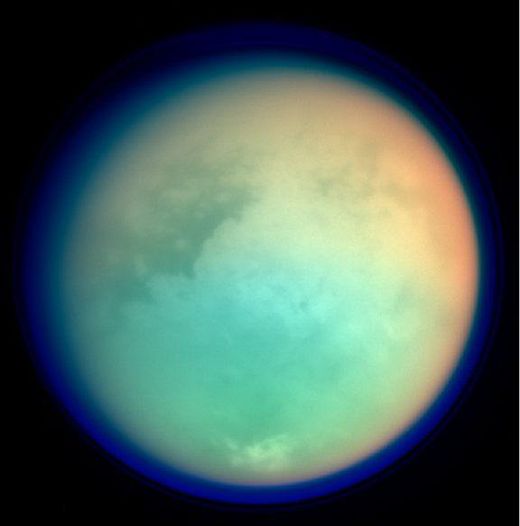
© UnknownSaturn's Moon Titan
A study has suggested that comets blasting gases out of its icy crust could have created the unique atmosphere of Saturn's moon Titan.
Several theories have come up earlier behind the origin of Titans nitrogen-rich air. Titan is the only moon in the solar system with much atmosphere.
Some theories suggest that volcanic activity might have belched it out, or sunlight may have broken up a primordial atmosphere's ammonia molecules. But these suggestions assume that the young Titan was a warm world, whereas measurements by the Cassini spacecraft imply that Titan has always been fairly cold.
The latest idea is that the atmosphere was created 3.9 billion years ago in a period known as the late heavy bombardment, when comets swarmed through the solar system.
"Huge amounts of cometary bodies would have collided with outer icy satellites, including Titan," New Scientist quoted Yasuhito Sekine of the University of Tokyo, Japan, as saying.
To mimic the effects of such high-speed impacts, Sekine and his colleagues fired projectiles into a mixture of ammonia and water ice similar to Titan's crust.
The impacts converted some of the ammonia into nitrogen gas, and Sekine's team calculated that ancient comet impacts could have liberated enough nitrogen to build Titan's atmosphere.
The study has been published in the journal
Nature Geoscience.